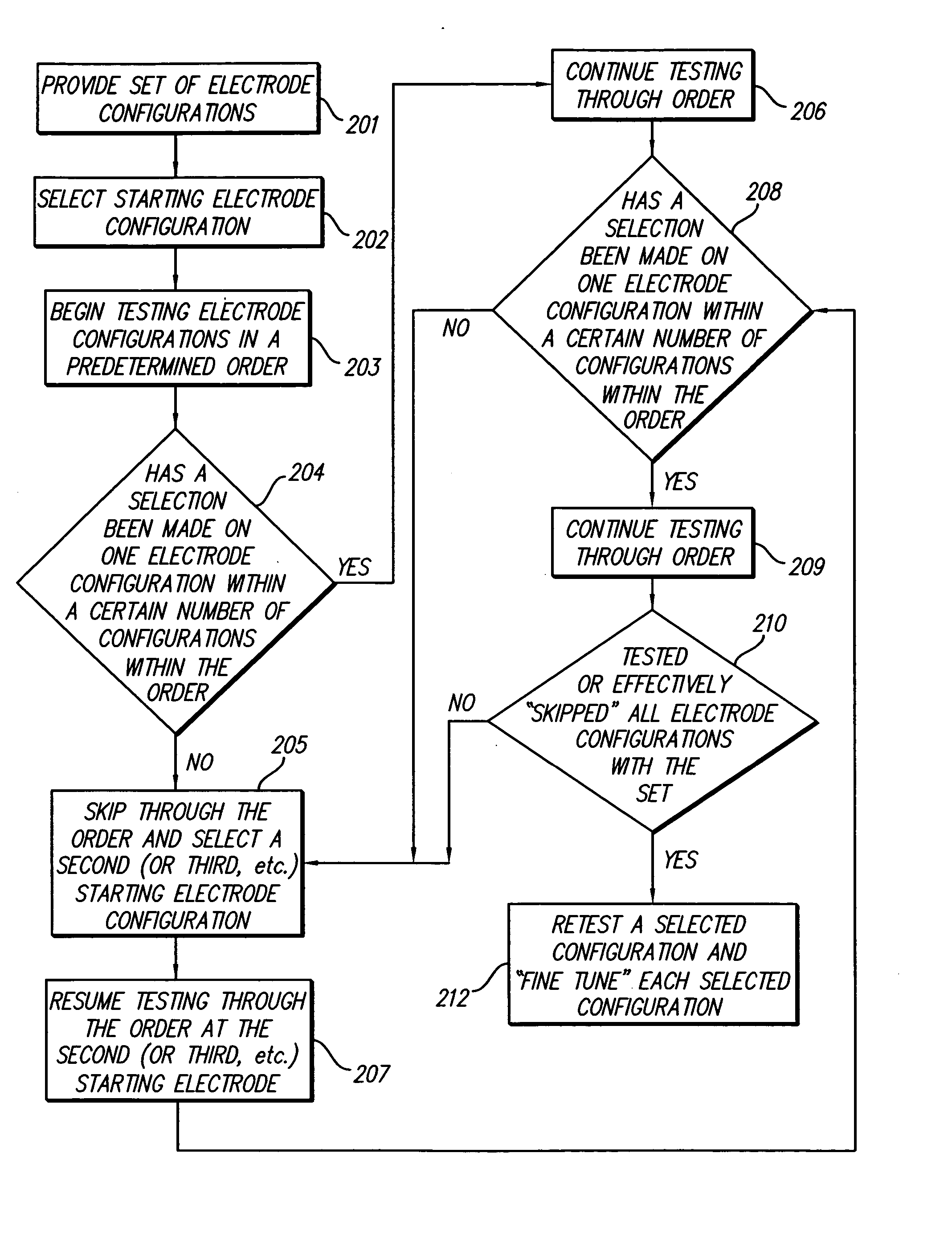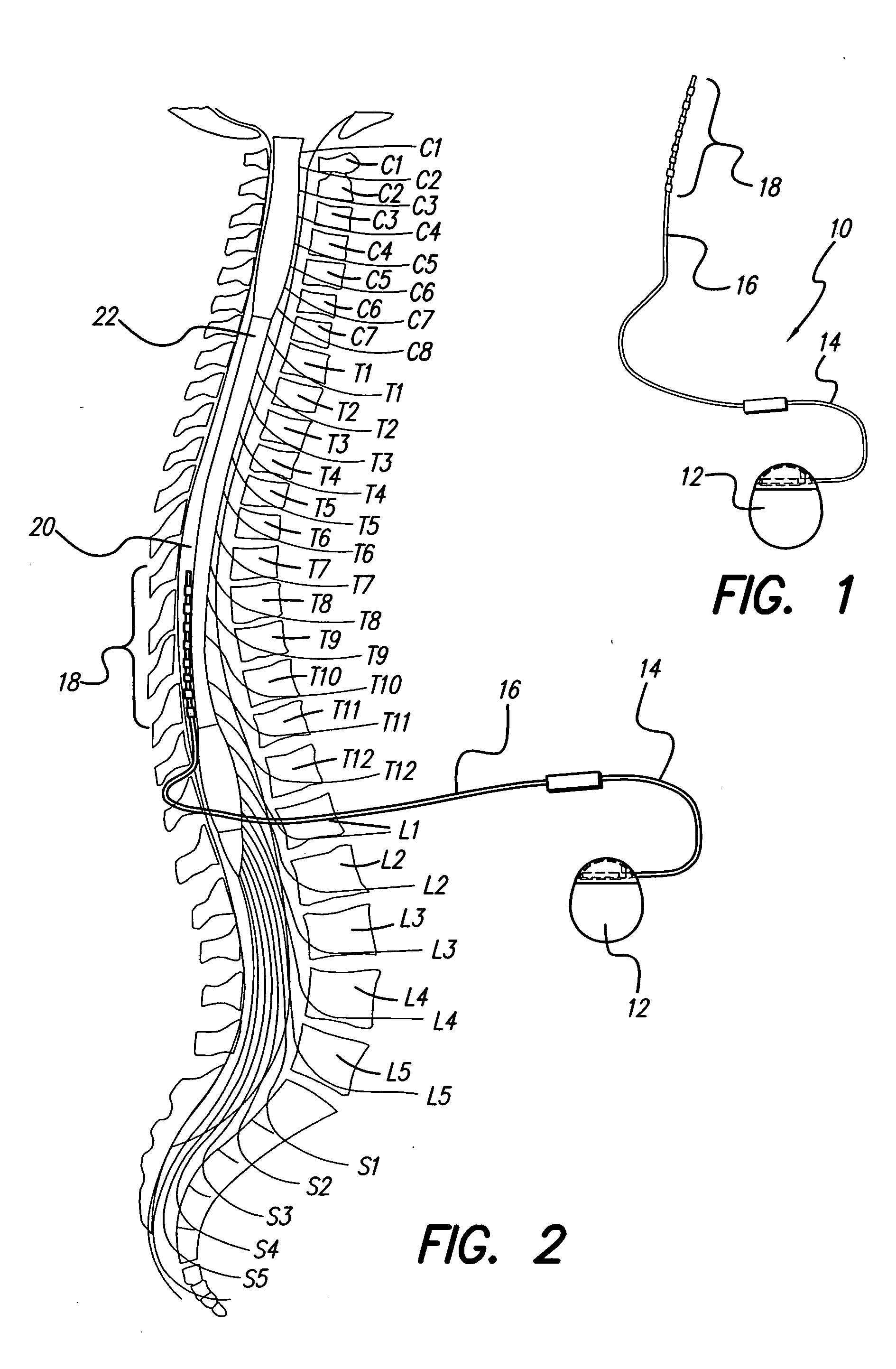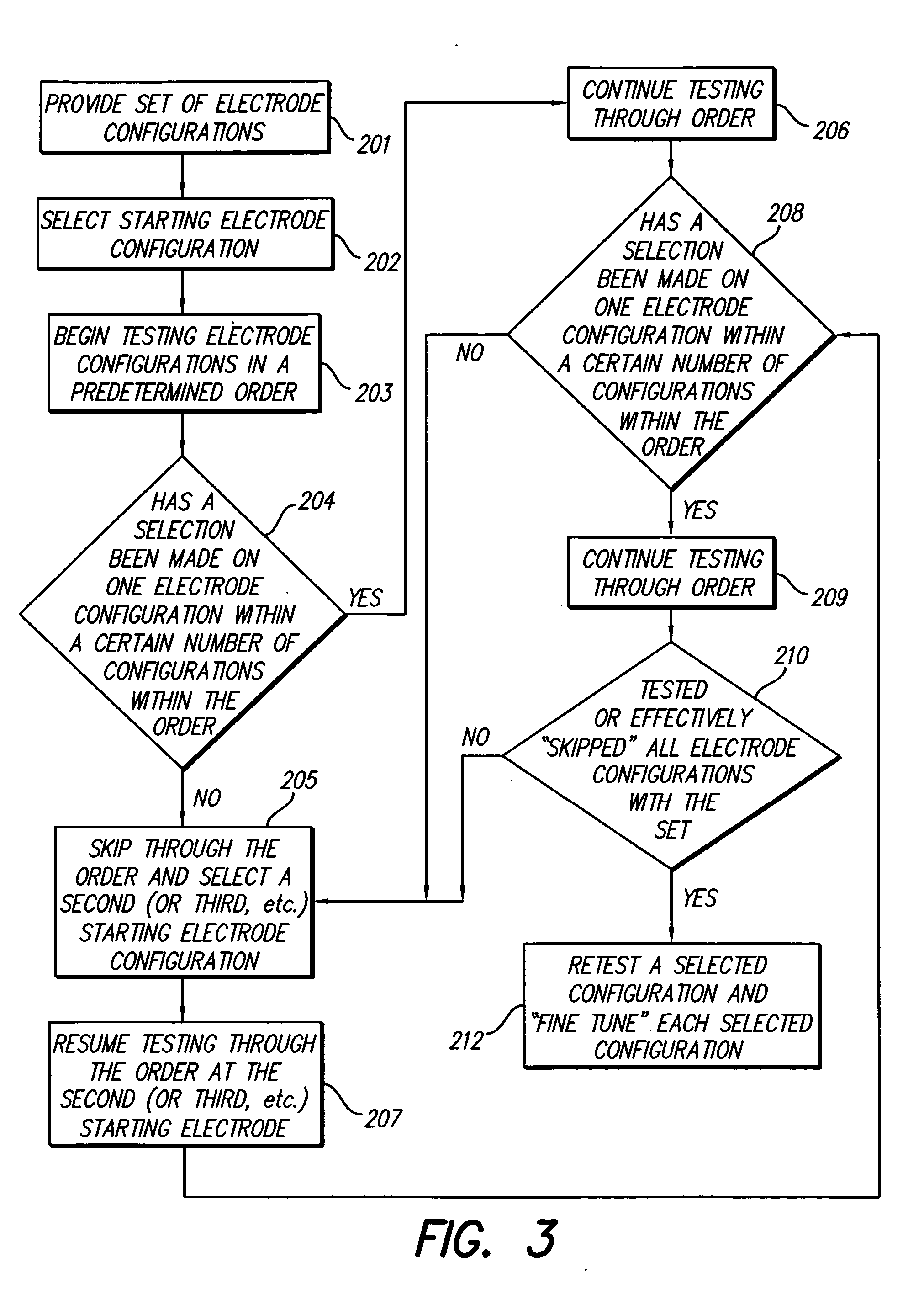Method for programming implantable device
a technology of implantable devices and programming methods, applied in electrotherapy, therapy, etc., can solve the problems of not having a systematic method to guide the clinician, and not having a systematic method
- Summary
- Abstract
- Description
- Claims
- Application Information
AI Technical Summary
Benefits of technology
Problems solved by technology
Method used
Image
Examples
Embodiment Construction
[0034] The following description is of the best mode presently contemplated for carrying out the invention. This description is not to be taken in a limiting sense, but is made merely for the purpose of describing the general principles of the invention. The scope of the invention should be determined with reference to the claims.
[0035] The methods of the present invention provide systematic approaches for selecting stimulation parameter sets, or electrode configurations, for medical electrical stimulators. A Spinal Cord Stimulation (SCS) system will be used herein as an example of such a medical electrical stimulator. The methods lead a user through a selection process that efficiently locates optimum electrode configurations. The selection process and system may also herein be referred to as “fitting,”“programming,”“navigating” a “fitting system,” or a “fitting program.” Thus, a user is allowed to navigate through the millions of electrode configurations to determine a customized...
PUM
 Login to View More
Login to View More Abstract
Description
Claims
Application Information
 Login to View More
Login to View More - R&D
- Intellectual Property
- Life Sciences
- Materials
- Tech Scout
- Unparalleled Data Quality
- Higher Quality Content
- 60% Fewer Hallucinations
Browse by: Latest US Patents, China's latest patents, Technical Efficacy Thesaurus, Application Domain, Technology Topic, Popular Technical Reports.
© 2025 PatSnap. All rights reserved.Legal|Privacy policy|Modern Slavery Act Transparency Statement|Sitemap|About US| Contact US: help@patsnap.com



